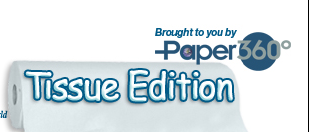Drying after Washing Key to Hand Hygiene
 Print this article | Send to Colleague Print this article | Send to Colleague
A new report this past week in the Journal of Applied Microbiology, Hoboken, N.J., USA, shows that not drying hands thoroughly after washing them could increase the spread of bacteria, and rubbing your hands while using a conventional electric hand dryer could be a contributing factor. Frequently people give up drying their hands and wipe them on their clothes instead, but hand hygiene is a key part of infection control and drying hands after washing is a very important part of the process, the article notes.
Conducted by researchers at the University of Bradford, the study looked at different methods of hand drying, and their effect on transfer of bacteria from the hands to other surfaces. The different methods included paper towels, traditional hand dryers, which rely on evaporation, and a new model of hand dryer, which rapidly strips water off of the hands using high velocity air jets.
Our bodies, the article explains, naturally have bacteria called commensals all over them. However, bacteria from other sources, such as raw meat, can also survive on hands, and can be easily transferred to other surfaces, increasing the risk of cross-contamination. When hands are washed, the number of bacteria on the surface of the skin decreases, but they are not necessarily eliminated. If the hands are still damp, these bacteria are more readily transferred to other surfaces.
In the study, researchers quantified the effects of hand drying by measuring the number of bacteria on different parts of the hands before and after different drying methods. Volunteers were asked to wash their hands and place them onto contact plates which were then incubated to measure bacterial growth. The volunteers were then asked to dry their hands using either hand towels or one of three hand dryers, with or without rubbing their hands together, and levels of bacteria were re-measured.
The team found that rubbing the hands together while using traditional hand dryers could counteract the reduction in bacterial numbers following handwashing. Furthermore, they found that the relative reduction in the number of bacteria was the same, regardless of the hand dryer used, when hands are kept still. When hands are rubbed together during drying, bacteria that live within the skin can be brought to the surface and transferred to other surfaces, along with surface bacteria that were not removed by handwashing.
The researchers found the most effective way of keeping bacterial counts low, when drying hands, was using paper towels. Among the electric dryers, the model that rapidly stripped the moisture off the hands was best for reducing transfer of bacteria to other surfaces.
The full article can be downloaded online.
   
|
|

